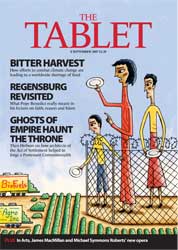The Selected Works of TS Spivet by Reif Larsen, Harvill Secker £17.99
Tucked away on the inside back cover of The Selected Works of TS Spivet is a url which takes you to a curiously eccentric website, decked out to look like a collection of sepia photographs and scratched movie clips, in which you can learn more about events and characters in the book.
You might, for example, listen to the music on TS Spivet’s sister’s iPod, or explore his father’s shrine to Billy the Kid.
It’s a curious discovery in a book which -- in both its physical appearance and in its content -- celebrates the gloriously old-fashioned art of map-making with pencils and pens, compasses and theodolites. Its 12-year-old narrator, TS Spivet, rejects the creation of digital mashups in which he could superimpose the complex material his works contain onto Google maps. Such an approach would make him feel like an operator; working traditionally makes him feel like a creator.
The book is a physical delight -- presented as a facsimile of TS’s work, with side panels in which maps, drawings, diagrams and footnotes spider every page.
In this context the website seems to be something of a multimedia joke; a Heath Robinson affair with handles to wind and slow-to-load flash sequences, where you scroll through text by pulling on a rope. Nevertheless, it points to what may be the future of multimedia book publishing, in which the printed page is no longer enough to tell a story.
All of which makes the story told in print even more poignant.
TS Spivet is a compulsive map-maker of extraordinary genius. He maps the people he meets, the places he sees: “everything that I have ever witnessed or read about”. He maps facial expression, particularly insincere ones.
Map-making brings him fame, and is the reason for the great journey that forms the spine of this book. The Smithsonian, unaware he is just 12, awards him a hugely prestigious prize and asks him to come to Washington.
So he sneaks out of his family’s ranch near Divide, Montana, jumps a freight train and begins an epic 2,000 mile journey; as challenging for a boy as the trek west of the pioneers, yet conducted in modern comfort. The train is carrying luxurious Winnebago Cowboy Condo mobile homes, and TS is able to camp out in one.
The journey is one through present and past, and the book is many things -- not least a Huck Finn-style adventure and a celebration of the American West -- told partly through maps because, for TS: “A map does not just chart, it unlocks and formulates meaning; it forms bridges between here and there, between disparate ideas that we did not know were previously connected.”
Once the Smithsonian’s officials have overcome their shock at TS’s youth, they set him to work, saying: “Remember, you are America’s illustrator now.” It’s a measure of Reif Larsen’s success that we might say the same about him.
Thursday 23 July 2009
Subscribe to:
Posts (Atom)
